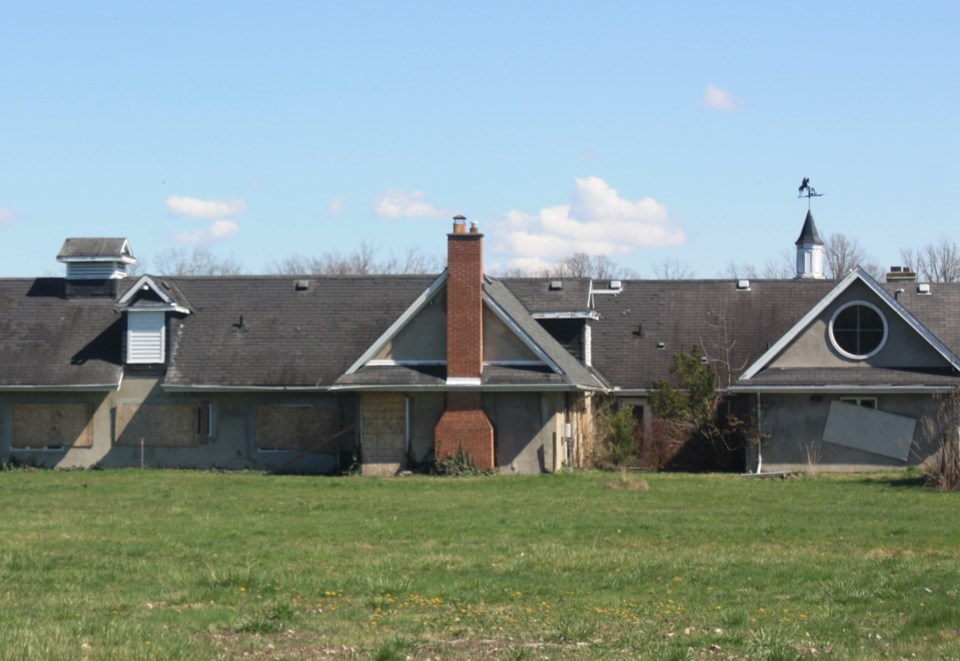Three areas on the Rand property slated for development have significant archaeological value, an expert witness for the developer told the Ontario Land Tribunal hearing as its second week concluded.
Expected to run until mid-May, the hearing has heard evidence from several experts brought in by Solmar Development, the builder who has filed a number of appeals related to decisions surrounding plans to erect almost 200 homes on the historic property in the Old Town area of Niagara-on-the-Lake, on John Street East and Charlotte Street.
Archaeological findings since 2017 were discussed Friday as Kim Slocki, an archaeologist, took the virtual stand, providing evidence and also being cross-examined by town and Save Our Rand Estate (SORE) lawyers. There are six areas on the development property considered archaeological sites, she said, three with significant value, and the other three evaluated as having low cultural heritage value.
Randwood, at 200 John St. is perhaps the richest when it comes to findings, as about 3,000 artifacts have been discovered so far. Slocki said this is likely attributed to more than 150 years of continuous domestic use between 1810 and 1971.
She said there is a significant amount of “fill disturbance” affecting what is unearthed, mostly due to 200 years of landscaping completed on the property.
Tribunal vice-chair Scott Tousaw asked Slocki if any artifacts indicated Indigenous occupation of the lands. Seven “flakes,” also known as “stone remnants” were discovered, said Sloki, but “it’s impossible to say if those artifacts are associated with the specific property or if they came from outside of the property.”
SORE lawyer Catherine Lyons displayed photos of equipment she said was used during tree removal, asking Slocki if it could have been “intrusive.” Slocki said yes, if it was used “in-ground.”
Co-counsel for Solmar, Sara Premi, said she did not have an issue with Lyons discussing the photos, but warned the tribunal that it was unclear, in her opinion, what exactly the equipment was used for.
Meghan Rivard is a cultural heritage expert also serving as a Solmar witness. She delivered evidence Friday as well, and was cross-examined. While discussing potential accesses to the proposed subdivision, she said “any access into this site is going to create an impact to the heritage attributes,” but the one at the panhandle should be preferred. What is being pitched by SORE, an access at 144-176 John St., would be “more severe” in how the stone wall would be impacted.
Rivard, while being cross-examined by Lyons, was asked about commemoration plans for the carriage house, a building Solmar plans to demolish. t’s being proposed that the footprint of the carriage house’s horse stalls be commemorated with a planting in its shape at another location.
“Do you think that gives a fulsome understanding of the context of that building?” asked Lyons. “When combined with interpretation, I do,” replied Rivard, noting it could involve something that’s not a “standard plaque,” and include salvaged building materials.
Chair Scott Tousaw asked Rivard about the possibility of the carriage house being converted to a community gathering space instead. Rivard responded that she’d “be more supportive of that” as opposed to it surviving demolition and becoming a private residence.
During Thursday’s proceedings, Mark Shoalts, a heritage structure engineer testifying as a witness for Solmar, had discussed the condition of buildings on the property. One of the structures he mentioned is the Calvin Rand summer home, a one-storey building that underwent an addition in the 1970s.
“Some parts of it are quite poor,” he said, adding problems include the condition of the floor. Its wooden frame has suffered over the years from moisture issues brought on by snow piling up outside and melting into the interior. It would need to be removed and rebuilt if the building were to survive the proposed development.
Completing the needed restoration of the structure would come at a cost of about $985,000, he told the tribunal.
The floor of the carriage house on the site would also need to be replaced, and the total work required for that structure would be more than $1 million, Shoalts said, even though it’s in “fairly good condition.” Vandalism has also been a problem in recent years, he said.
The carriage house, even though it has horse stalls, was built to hold automobiles, he said, and a recommendation by SORE to shift the position of the structure would “remove what’s relevant about it,” in that the driveway would no longer face the stalls.
The bath house is in “reasonably good condition” but the roof needs to be replaced because of damage caused by carpenter bees and woodpeckers, said Shoalts.
The hearing resumes next week with more Solmar witnesses expected, including agrologist Sean Colville and landscape architect Tim McCormick.
